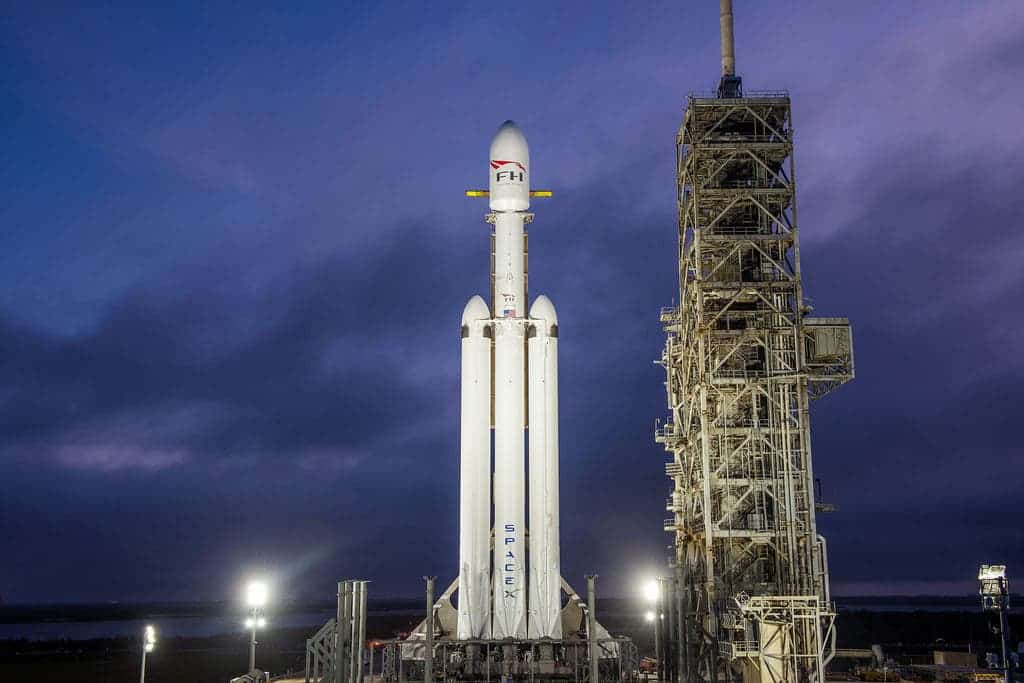Later today, SpaceX will be test-firing the firm’s most powerful rocket, the Falcon Heavy, which is earmarked to shuttle humans to Mars.

The Falcon Heavy has the distinction of being the most powerful operational rocket today and the second most powerful rocket humanity has ever built — outclassed in payload capacity only by NASA’s Saturn V rocket, which put a man on the Moon.
The Falcon Heavy, on the other hand, is Elon Musk’s attempt to put a man on Mars. It’s a long and hard trek, so the vessel is about twice as powerful as its closest operational competitor. It’s an impressive bit of technology that SpaceX wants to make sure works perfectly on the first try. As such, the company will test fire the rocket’s (impressive) array of 27 engines today, Tuesday 15th, at the Kennedy Space Center in Florida, between 4 p.m. and 10 p.m. ET.
“With more than 5 million pounds of thrust at liftoff, Falcon Heavy will be the most capable rocket flying,” SpaceX states on its website. “By comparison, the liftoff thrust of the Falcon Heavy equals approximately 18 747 aircraft at full power.”
The only rocket that could carry a larger payload into orbit was the Saturn V, but that’s last been flown in 1973. It needs all that oomph, too, as the biggest challenge of sending a crew to Mars is the weight of the payload, around 10 times more than that of the Curiosity Rover.
Musk has high hopes for the Falcon Heavy. The billionaire has repeatedly talked about his ambition to make humanity a multi-planetary species, even calling for the President’s support in this endeavor last February. He even went as far as to goad his competition on if it gets us to that point sooner.
More photos of Falcon Heavy on the launch pad → https://t.co/095WHX44BX pic.twitter.com/Z5aE1BUFSt
— SpaceX (@SpaceX) January 3, 2018
The Mars mission is just the first step on that path, but it could completely make or break Musk’s vision. A failure here could stifle the excitement in space travel for whole generations to come — and a success could galvanize societies across the Earth in a manner we haven’t seen in decades.
SpaceX is investing heavily in the hopes that the latter outcome comes to pass. According to NASA estimates, the company is investing around 320 million USD on the mission, a sum the agency will also contribute to. It makes perfect economic sense for NASA to do so as well since they can piggy-back on the company’s technological improvements — for example, use of SpaceX Dragon capsules allowed NASA to resupply the International Space Station (ISS) at a fraction of its previous costs.
Fingers crossed for a successful test!


